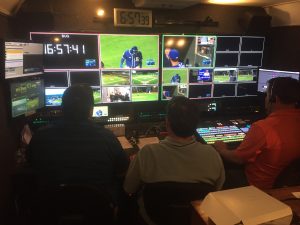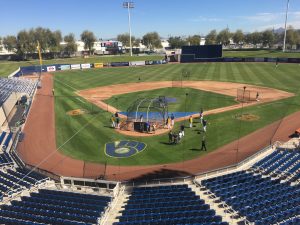MLB Spring Training Stays Connected With LTN IP Services
The company has added 103 games, 12 teams, 11 venues to its portfolio since 2016
Story Highlights
As players, coaches, and minor-league hopefuls flock to Florida and Arizona for MLB Spring Training, LTN will return to its temporary home for the fourth year in a row. With the exhibition period beginning tomorrow, a large slate of games in venues across both states will be transmitted with the help of the company’s IP infrastructure.
Jump-Started in 2016
Before teams began reporting to camp in 2016, LTN was approached by the Minnesota Twins and Fox Sports North, the team’s local regional sports network, to develop a procedure for bridging the gap between the action in Florida and the fans back home. After some discussion on possible options, the RSN selected LTN as its main transmission provider.
“We did 10 games that first year, and everything went smoothly, says Steve Higgins, director, college initiatives and RSNs, LTN Global Communications. “After we had some success with the Twins at Hammond Stadium, we heard from five other teams that said, ‘Hey, can you install LTN LEAFs at these venues?’”
Although multiple teams showed high interest in converting to an IP-based production, a few roadblocks needed to be eliminated to pave the way for future growth. Primarily, it was difficult to convince RSNs and major-league teams that had used the same contribution method at Spring Training for years that a more efficient model was available.
Production at Spring Training, Higgins says, is basically to “take a satellite truck and park it for 30 days. That is what people have done for the last 30 years, so a lot of the mindset was to just keep doing what they have been doing.”
In addition, and more important from a tangible standpoint, the stadiums were old, with outdated structures that could have impeded installation of new technology.
“Having updated internet access was a challenge at some of these sites,” he says, “but, every year, it has gotten better and better.”
A Unique Plan for Each Ballpark
Higgins and his team came up with personalized solutions to cater to the obstacles. For example, LTN needed some help with local companies in the area.
“This year, the San Francisco Giants worked with Cox Communications in Arizona at Scottsdale Stadium,” Higgins says. “[Cox] pulled fiber [into the stadium], and, once that happens, that gives us an on-ramp to be able to get IP installed at that venue and provide service for NBC Sports Bay Area. We ran across this as well with the Phillies in Clearwater, FL, at Spectrum Field [for NBC Sports Philadelphia].”
To ensure a smooth broadcast and make sure each production team is comfortable with the new tools, LTN has been onsite at each venue during the week prior to first pitch.
“Each year, we get a different request,” Higgin notes. “[To accommodate these requests], we’ve added patch panels and updated cable runs.”
One individual in particular — Vern Hemsley, Senior Project Manager, LTN Global Communications — is spearheading the effort in Scottsdale to alleviate any growing pains in the Giants’ transition to IP.
A Continued Sense of Growth
Since LTN’s first trip to Spring Training, the promise of IP has pushed other teams to become a part of the fast-growing movement. The company’s portfolio has expanded from the Minnesota Twins as the only participant to a projected 113 games for 13 teams in 12 separate venues. In addition, eight of the teams have made the investment to integrate IP equipment into their facility themselves, along with LTN’s expertise.
“We still have teams that have that mindset of ‘I’ve used satellite for the last 30 years, why do I want to change?’” Higgins says. “Every time we’ve done a project like this and whenever we’ve had success, that is what gets the people in the industry talking.”


